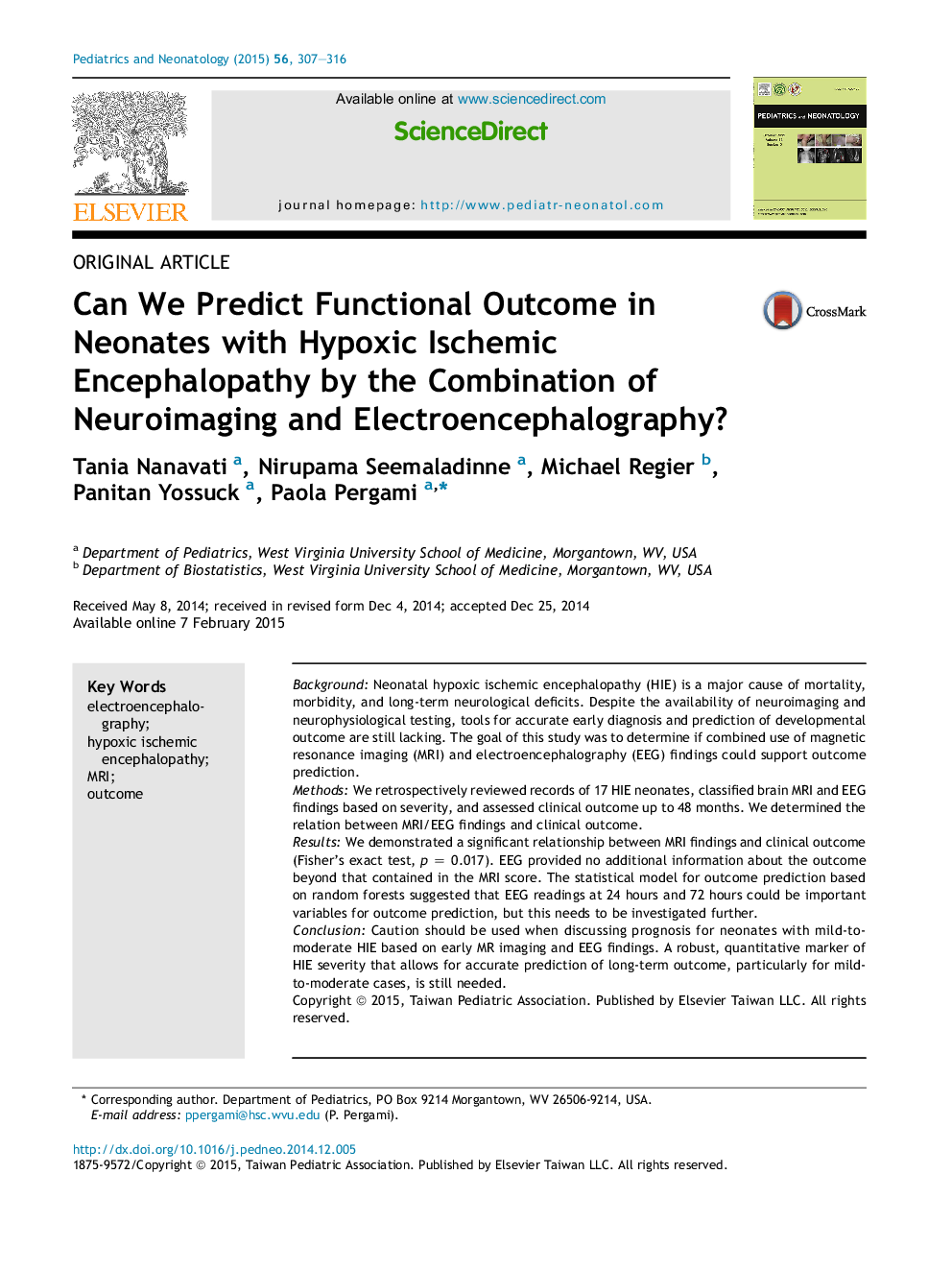| Article ID | Journal | Published Year | Pages | File Type |
|---|---|---|---|---|
| 4175171 | Pediatrics & Neonatology | 2015 | 10 Pages |
BackgroundNeonatal hypoxic ischemic encephalopathy (HIE) is a major cause of mortality, morbidity, and long-term neurological deficits. Despite the availability of neuroimaging and neurophysiological testing, tools for accurate early diagnosis and prediction of developmental outcome are still lacking. The goal of this study was to determine if combined use of magnetic resonance imaging (MRI) and electroencephalography (EEG) findings could support outcome prediction.MethodsWe retrospectively reviewed records of 17 HIE neonates, classified brain MRI and EEG findings based on severity, and assessed clinical outcome up to 48 months. We determined the relation between MRI/EEG findings and clinical outcome.ResultsWe demonstrated a significant relationship between MRI findings and clinical outcome (Fisher's exact test, p = 0.017). EEG provided no additional information about the outcome beyond that contained in the MRI score. The statistical model for outcome prediction based on random forests suggested that EEG readings at 24 hours and 72 hours could be important variables for outcome prediction, but this needs to be investigated further.ConclusionCaution should be used when discussing prognosis for neonates with mild-to-moderate HIE based on early MR imaging and EEG findings. A robust, quantitative marker of HIE severity that allows for accurate prediction of long-term outcome, particularly for mild-to-moderate cases, is still needed.
